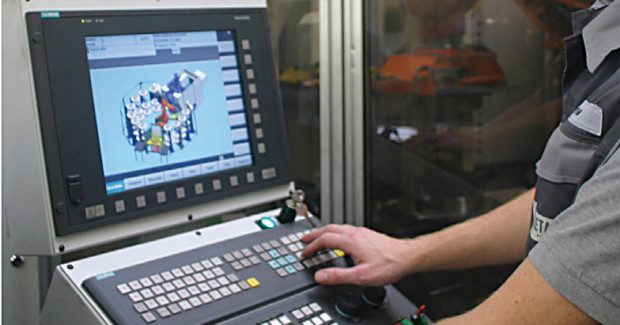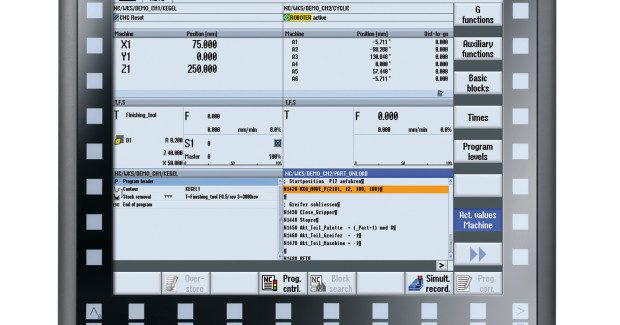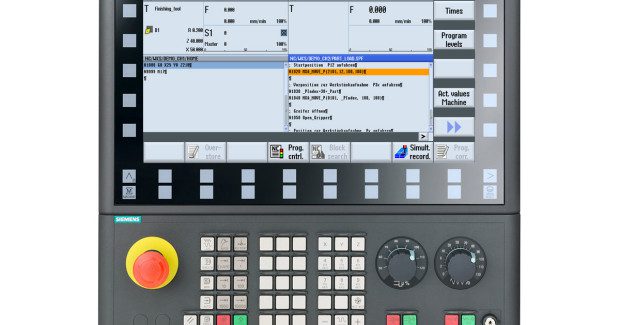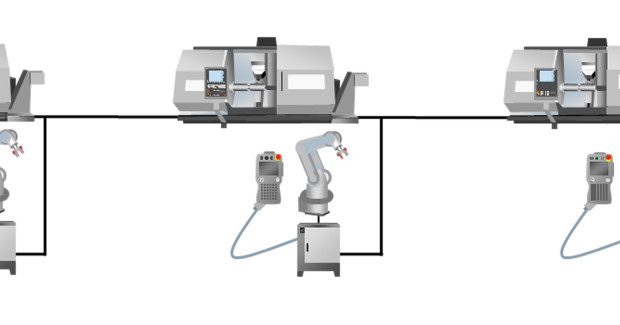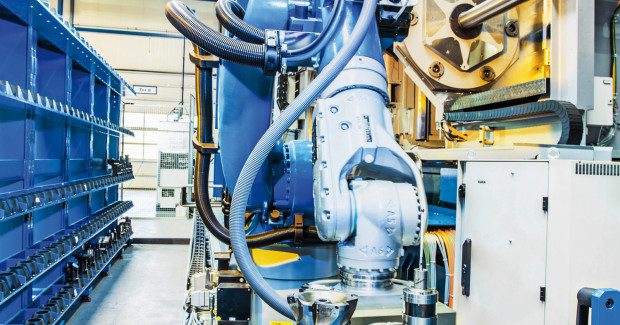Robotic Integration
CNC allows the full and scalable integration of a robot into any machining operation, allowing shops and large production departments alike to do so much more.
Posted: April 17, 2014
Full robotic integration with a CNC onto a 3-axis mill, work cell, laser line, press line or full transfer line incorporating multiple machining or metalforming operations would have seemed a distant wish, just a decade ago. As I always tell people nowadays, this is one of the most exciting times in metalworking . . . because all these things are now being done, every day.
Not that long ago, the use of a robot in any machining or metalforming operation required a separate PLC, separate programming language and a completely separate control, with all the knowledge needed to run the robot. Today, on an advanced CNC with dual channel capability, you can dramatically improve the productivity of your machine shop, production department, laser, press brake or fab shop operation. And you can do it without any special knowledge of robot language or all the ancillary hardware and software.
Flexible loading and unloading mean the machine spindle, laser head, press brake or stamping die is use to a far greater degree and that means money to your bottom line. With the compact robots on the market, plus this integrated CNC control capability, even the smallest shop can today look at robotic solutions in their operations. Even at short run shops, the on-the-fly program adjustments and teach-in capabilities of the CNC are today proving their worth.
Run MyRobot and KUKA.mxAutomation are synonyms for the integration of robots into the machine tool. Siemens and KUKA offer a common solution for handling tasks to be executed on machine tools equipped with robots. The machine operator uses the usual SINUMERIK Operate user interface and can thus immediately use the robot in a productive manner.
With that dual channel capability onscreen, an operator can use the same control, whether stationary on the machine or on a remote pendant for mobility around the machine or work cell, to run both the machine and the robot. For the shop owner, the initial cost of the system is amortizable across the use life of the robot and the improvements in productivity will quickly validate the feasibility and profitability of the system. For the programmer, the function blocks of the robot automation can now be programmed directly via the PLC of the machine tool, then run on the CNC in the same way as the NC cutting or forming programs.
For the operator, the simplified set-up and adjustment of the robot to handle a family of short run parts, for example, is easier than ever. Using the HMI on the CNC, an operator can teach the robot what motions to perform in a matter of minutes. With no need of that separate PLC or signal command language, the operator sets up the robot in the same manner as the machine tool, laser, press or other equipment. Likewise, in a work cell, the robot can be sequences to perform a variety of operations at each machine in the cell.
These solutions are scalable to suit the requirements of your shop or production department, so robot integration onto a single machine, work cell or fully networked facility can quickly become a cost-effective alternative today. Best of all, robotic integration is now a feasible option for the OEM machine builder, for retrofit in the shop or for the system integrator looking to help his customer improve the overall productivity of the metalworking department.
Robots can really lend a “helping hand” to all metalworking operations today. And the CNC makes that process a lot easier. Call me with your questions and I can probably tell you about a shop like yours that I’ve seen doing it.






